Drones may someday deliver packages, pizzas and mail. Drones might hover in remote areas and broadcast a wireless signal, delivering Internet connectivity to under-served geographies. Drones already help farmers optimize crop production. They help real estate agents sell residential and commercial properties. Drones have created new markets in forestry, mapping, and oil and gas exploration. It seems there’s no end to what drones can do, and the market is booming. A web search reveals dozens of companies ready to fly for you, capturing aerial photography and video at a fraction of the cost of traditional methods. But there’s a problem technology has yet to solve: Batteries.
30 Minutes in the Air, 90 on the Ground
Most drones fly for a half-hour, at most, until they’re grounded for recharging or battery swap-out. Charging can take 60 to 90 minutes, keeping that drone on the ground when its operator wants it to be in the air doing productive, billable work. Not only does the battery power four motors on quadcopter models, it must also deliver current to a high-resolution video camera running at 720p or 1080p. Depending upon the type of drone, the battery must also power an on-board CPU, memory and a GPS receiver as well. Commercial drones are essentially flying computers with a video camera.
of drone, the battery must also power an on-board CPU, memory and a GPS receiver as well. Commercial drones are essentially flying computers with a video camera.
Designing a drone with longer battery life, and therefore longer flying time, challenges engineers. The greater the battery’s power capacity, usually expressed in milli-Ampere-hours (mAh), the heavier the battery required. Rocket engineers face much the same problem. The greater the fuel tank capacity, the heavier the fully-fueled rocket becomes. Gravity is unforgiving and gives no quarter, so whether it’s a problem for rocket scientists or drone design engineers, there’s always an optimum point between capacity and weight versus battery life and flight time.
One might express it as: mAh ÷ Mass ∝ Timeflight. Today, in early 2017, that optimum point hovers around 25 to 30 minutes.
But Batteries Do Keep Getting Better
Battery technology has improved dramatically over the last few decades. From NiCd and NiMH rechargeable batteries of the 1980s to LiIon and Lithium Polymer batteries used today, capacity has steadily improved. But there’s room for further improvement.
For instance, a few cell phone models can deliver more than ten hours of operation between charges. Yet many cannot, and those users wish their phone would last through the day and survive on a single recharge at home each night. Because many cannot, users take steps to keep their phones running longer. They turn off their Facebook, Twitter and email polling; turn off radios (Bluetooth, Wi-Fi, FM, GPS) when they’re not needed; dim the screen, which tends to be the greatest electricity consumer; and, kill background apps that aren’t needed.
For those users whose phones need more than once-a-day charging, wireless charging technology has at least simplified the matter of recharging the battery. Dozens of car models now offer wireless charging pads, usually integrated into the center console. They make it convenient and easy to recharge without wires and power adapters. Some PC monitors provide a wireless charging pad. Many airports and restaurants, too, offer wireless charging.
And now, there are early indications that wireless charging can extend the flight time of drones as well.
World’s First Self-Charging Drones
Dr. Samer Aldhaher, an electrical engineering researcher at the Imperial College of London, posted a video that demonstrates how drones might evolve. This drone, flying without a battery almost five-inches (12 cm) above a wireless charging pad, consumes 5 to 10 watts. The overall system, built as a proof-of-concept, not an optimized design, transfers power with well above 70 percent efficiency. The charging pad, made with one ounce of copper wire, carried about 8A of current at 13.56 MHz.
Nikolai Tesla envisioned transmitting power over long distances as long ago as 1891. He met with the American Institute of Electrical Engineer that year and held an early version of today’s fluorescent bulb in his hand. It glowed brightly with no wires or external connections as he explained to the audience that electrical current was being transmitted through the air by a pair of metal sheets. His audience was amazed and bewildered.
Today, companies in China, Japan and the U.S. are developing new technologies to bring some of Tesla’s wireless over transmission ideas to reality. Global Energy Transmission, for instance, focuses on high-power wireless energy transmission over long distances. The company uses an antenna, an “energy transmitter,” that creates a sphere 20 to 30 meters in diameter for wireless charging of drones. The company claims power transfers can range from 500 Watts to 30kW or more.
One can imagine a radio broadcast or cell phone tower fitted with wireless charging equipment. Autonomous drones, sensing their battery is running low, could fly to the tower and linger in the area until suitably recharged, then return to their airborne missions.
The future seems to arrive faster every day. Perhaps it won’t be long until drones do seek out their own recharging platform, then return to their surveillance or other work. As that scenario develops, no doubt an industry segment will grow around it with standards and protocols designed to make the process safe, foolproof and reliable.
In the meantime, though, there’s one component that’s crucial to any wireless charging system, and it’s known as Litz wire.
 Litz Wire
Litz Wire
Litz wire is designed to equalize the flux linkages and reactance of the individual strands that make up the wire, causing the current to spread uniformly throughout its conductors. The resistance ratio (AC to DC) then tends to approach unity, which is desirable in all high-Q circuit applications. When you’re designing wireless power transmission, high-Q is what you need. Litz wire delivers it.
The term Litz wire comes from the German litzendraht, which means braided or stranded wire. Many thin strands of insulated wire are twisted or braided together in a specific pattern to make the finished product. Depending upon design requirements, multiple bundles of fine, twisted wire can each be twisted further, as shown in the illustration below.
 Achieving power transmission across distances of more than a few inches uses resonant induction where the transmitter and receiver LC circuits are optimized for a particular AC frequency. Resonant circuits, with capacitive and inductive reactances equal in magnitude and 180 degrees out of phase cause high current values to flow in the receiving coil. Using Litz wire rather than conventional single or stranded wire optimizes the Q-factor, improving power transfer efficiency, and allowing for increased distance between transmitter and receiver coils.
Achieving power transmission across distances of more than a few inches uses resonant induction where the transmitter and receiver LC circuits are optimized for a particular AC frequency. Resonant circuits, with capacitive and inductive reactances equal in magnitude and 180 degrees out of phase cause high current values to flow in the receiving coil. Using Litz wire rather than conventional single or stranded wire optimizes the Q-factor, improving power transfer efficiency, and allowing for increased distance between transmitter and receiver coils.
New England Wire Technologies was the first company in the U.S. to manufacture Litz wire on a commercial basis, beginning in 1898. Since then, the company has provided Litz wire to the space and aeronautics industry, to the medical electronics industry, and to hundreds of clients across many others including high frequency inductors and transformers, inverters, communication equipment, ultrasonic and sonar equipment, television and radio equipment, and induction heating equipment. New England Wire has also provided cabling, insulating and other services to the superconductor industry since its inception in the early 1960s. As well, these products are integrated into major accelerator projects, ore separator magnets, nuclear magnetic resonance magnets, nuclear fusion projects, and superconducting magnetic energy storage magnets.
As for wireless power transmission, New England Wire Technologies has become a significant contributor both at home and abroad. Unique Litz wire manufacturing capabilities—coupled with the company’s superior knowledge of Litz wire’s applications and design parameters—has attracted clients from dozens of countries working to meet critical design parameters such as efficiency, range, thermal budgets, etc. To learn more, follow any of the links below, or contact us directly to discuss you current or upcoming wireless power transmission project.
Custom Design

About Our Engineers
Innovative solutions start with an experienced team of engineers, armed with the latest design tools and technology. Our focus on understanding the individual, complex challenges of our customers and designing solutions that fit, is why we have been trusted as the industry leader for over 100 years.







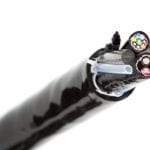
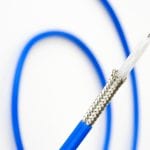

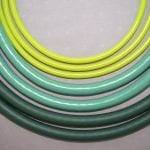
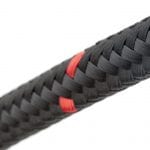

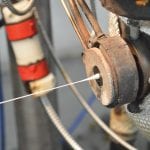
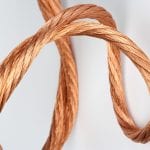
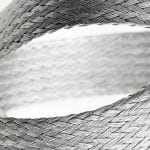
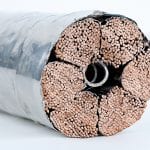

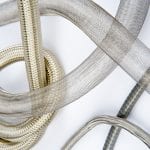
 Litz Wire
Litz Wire